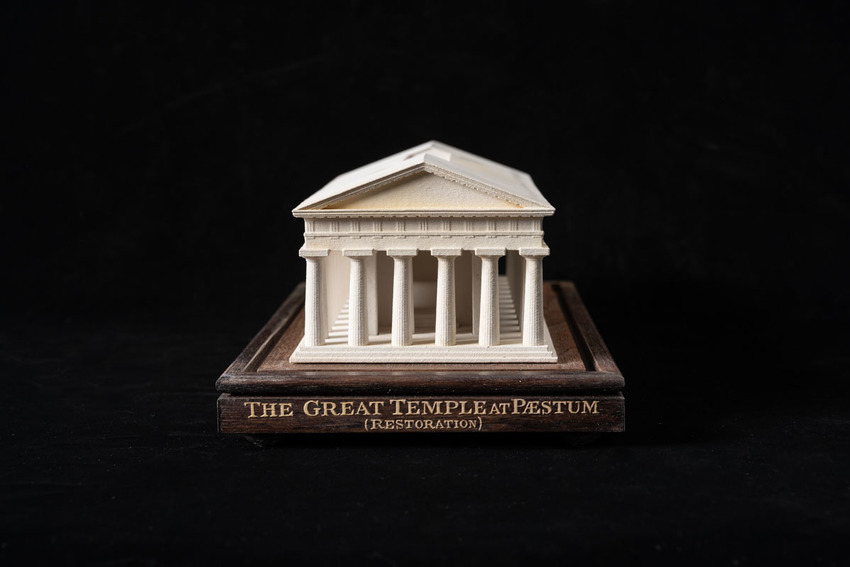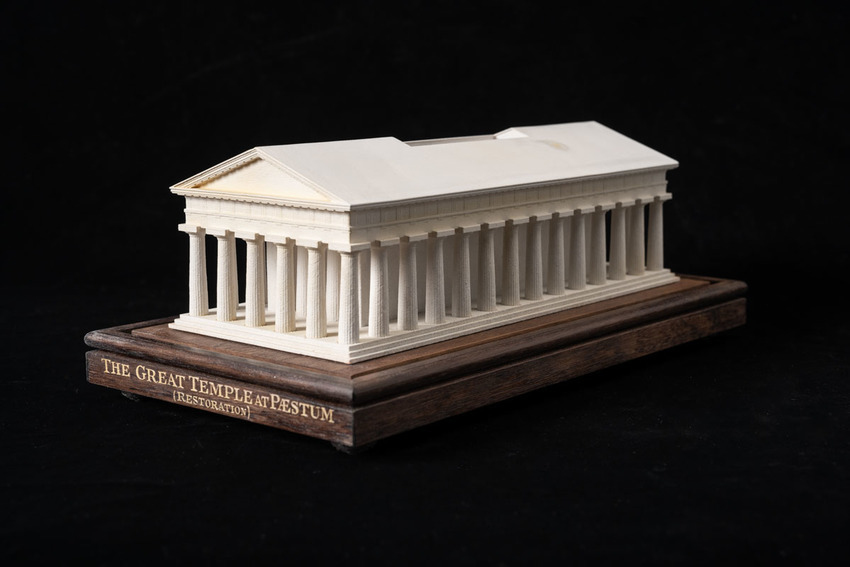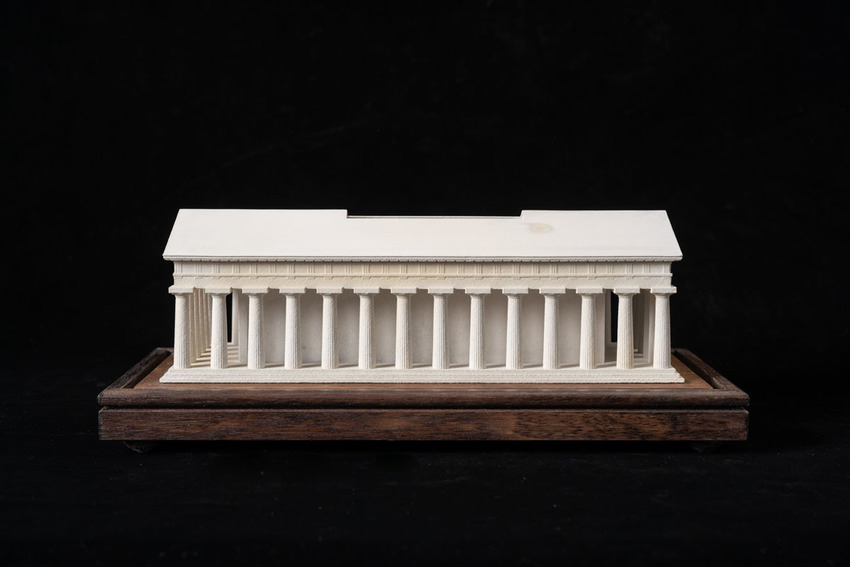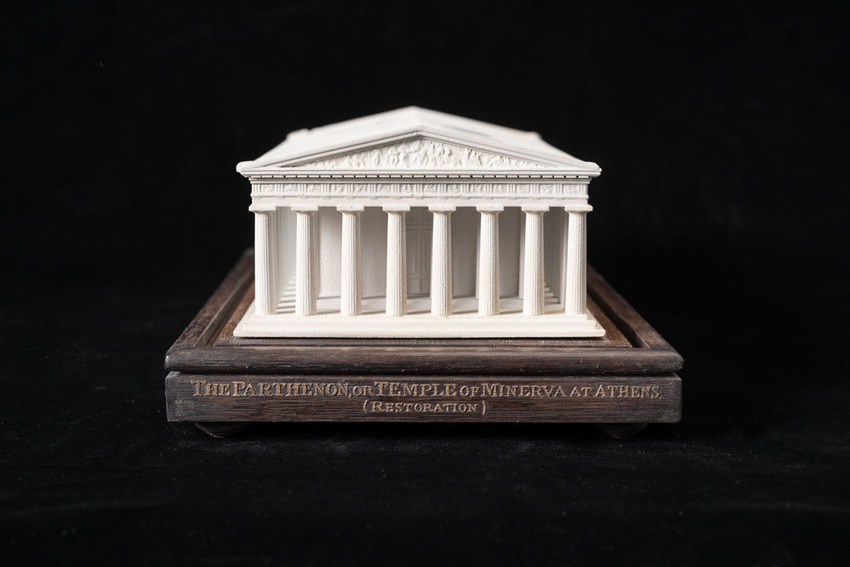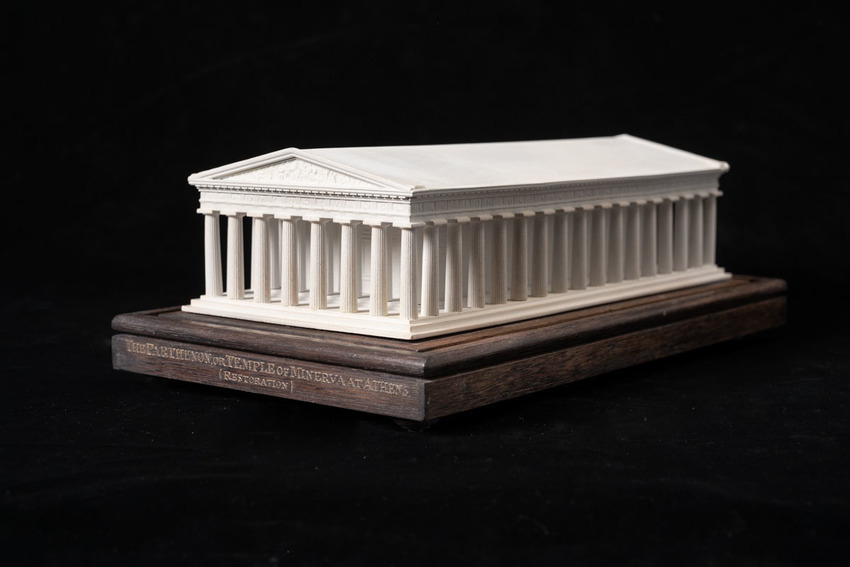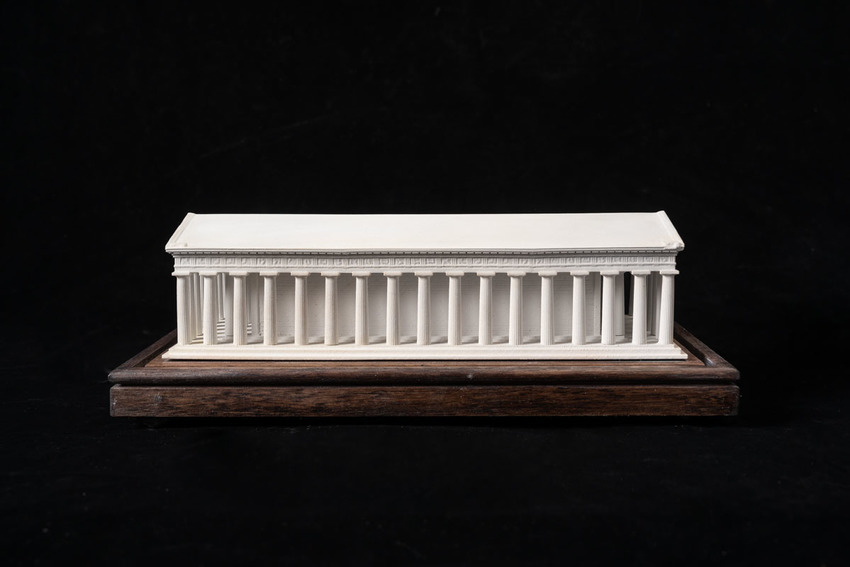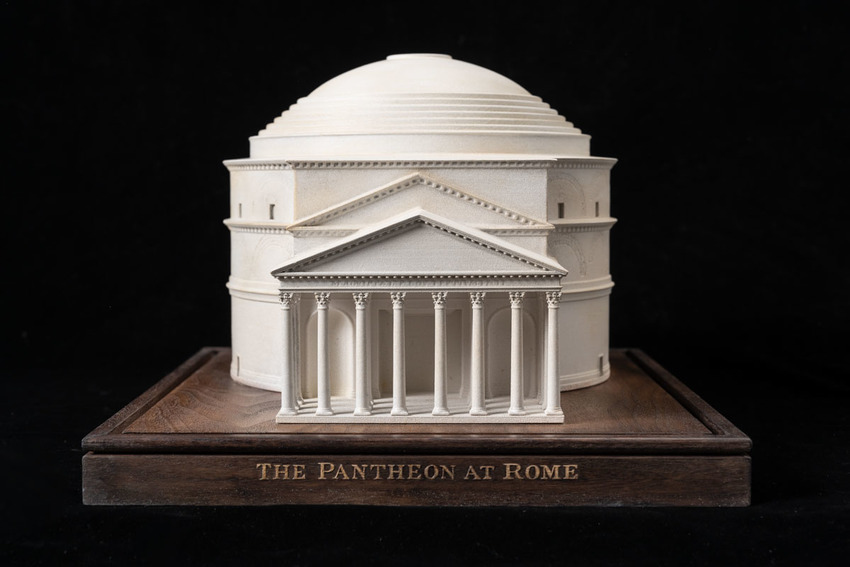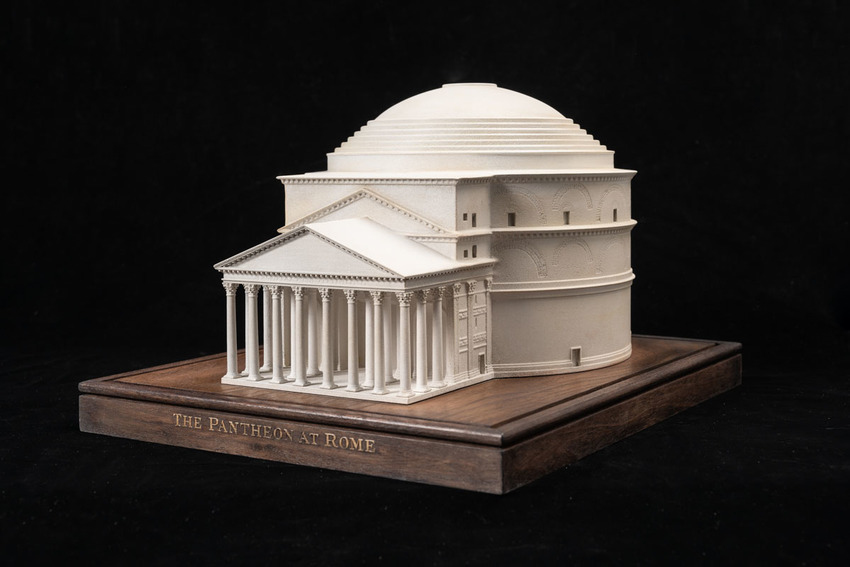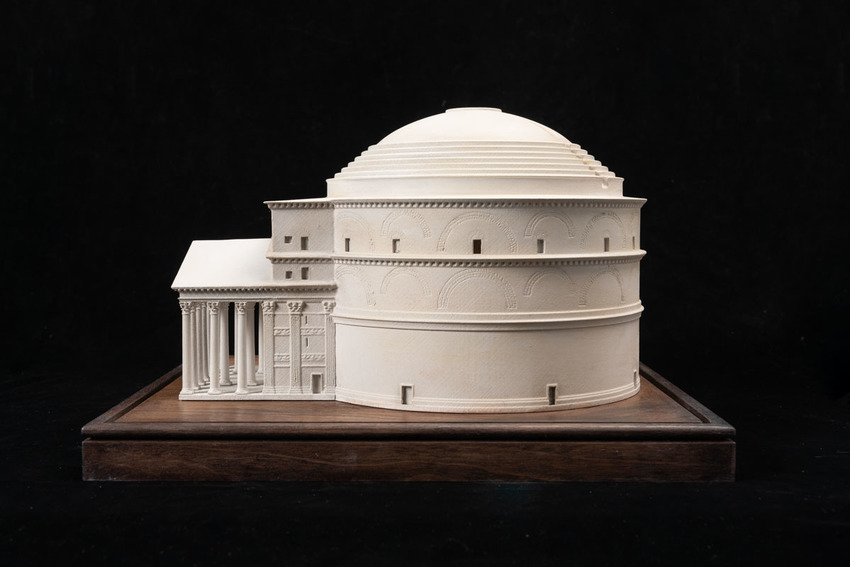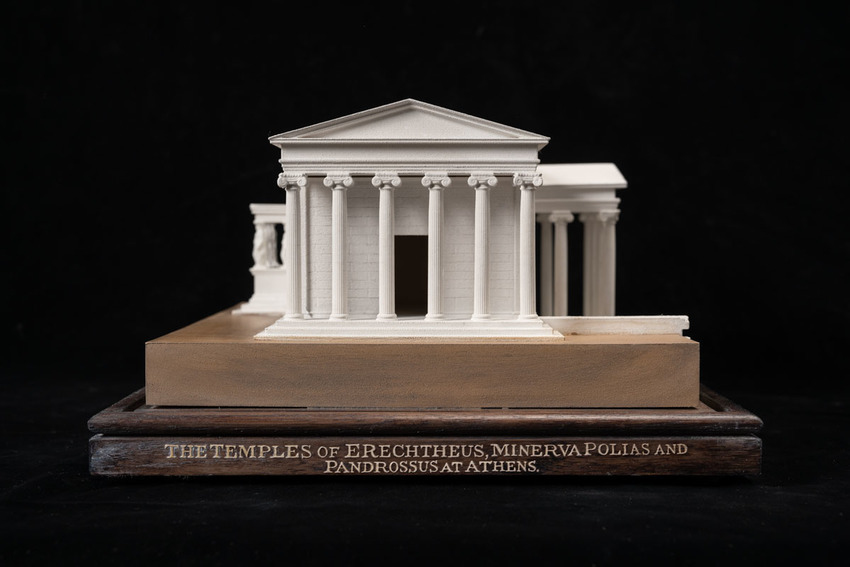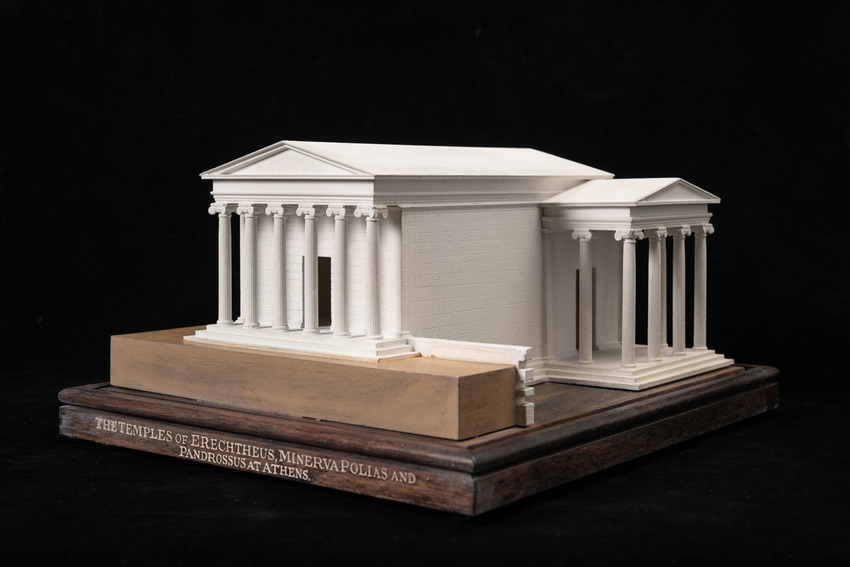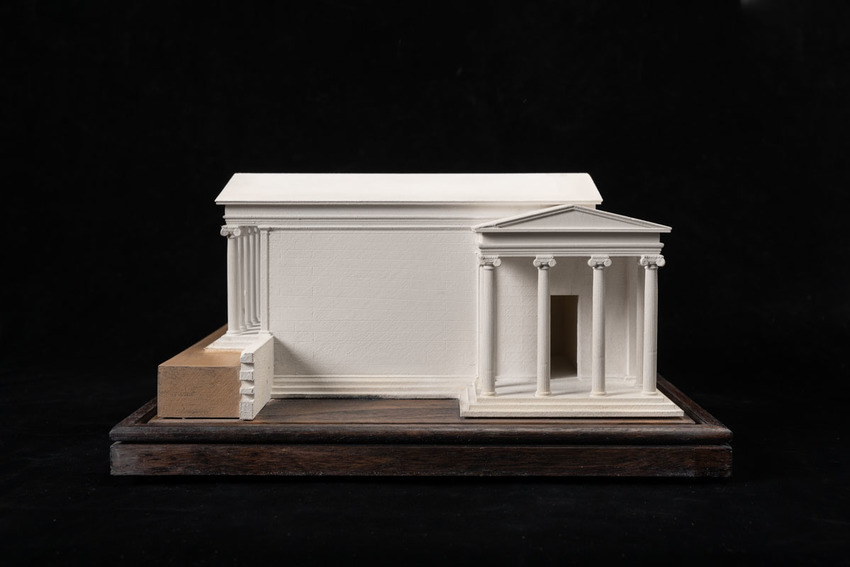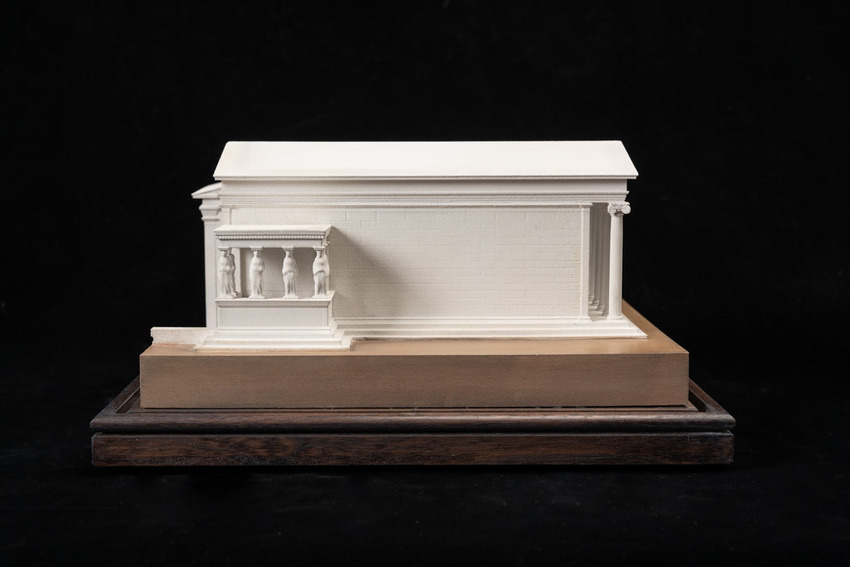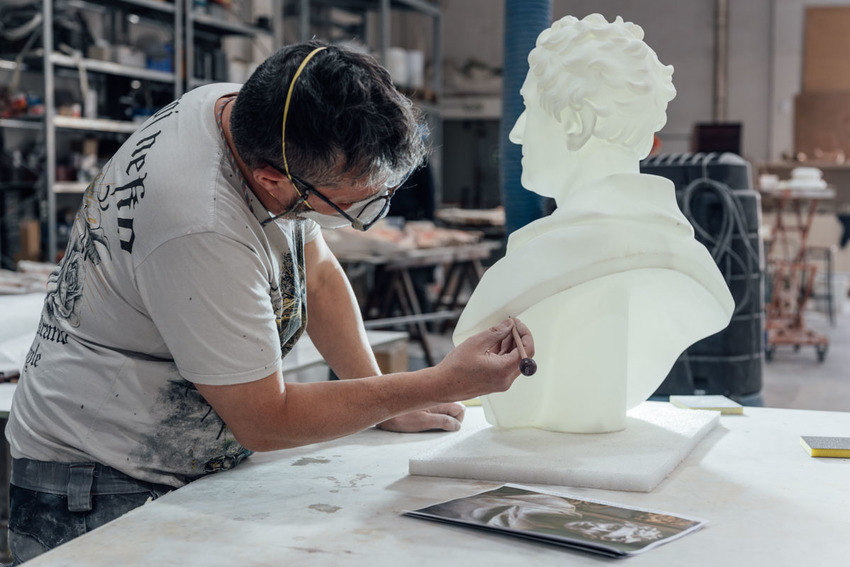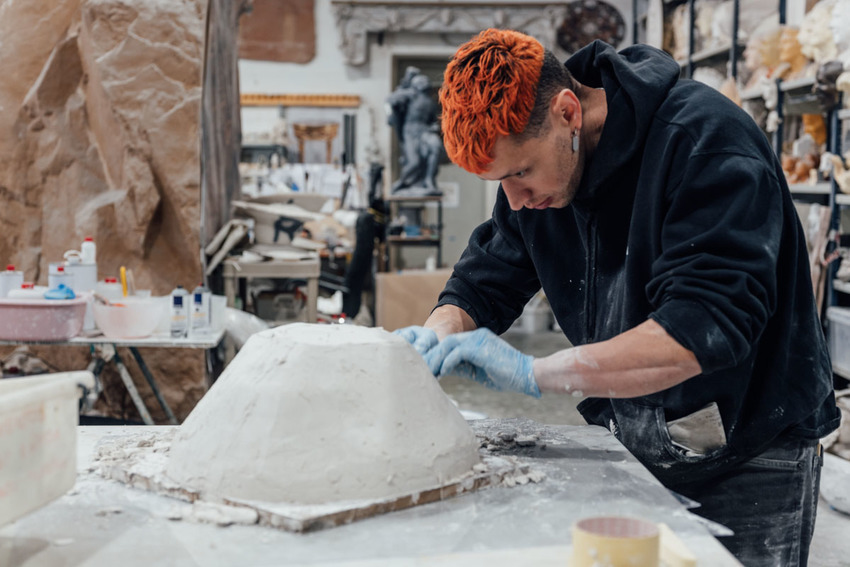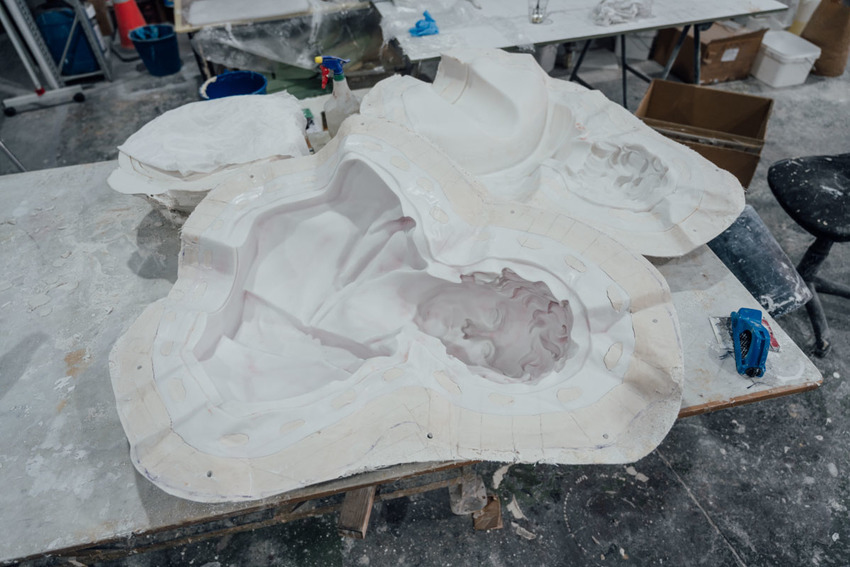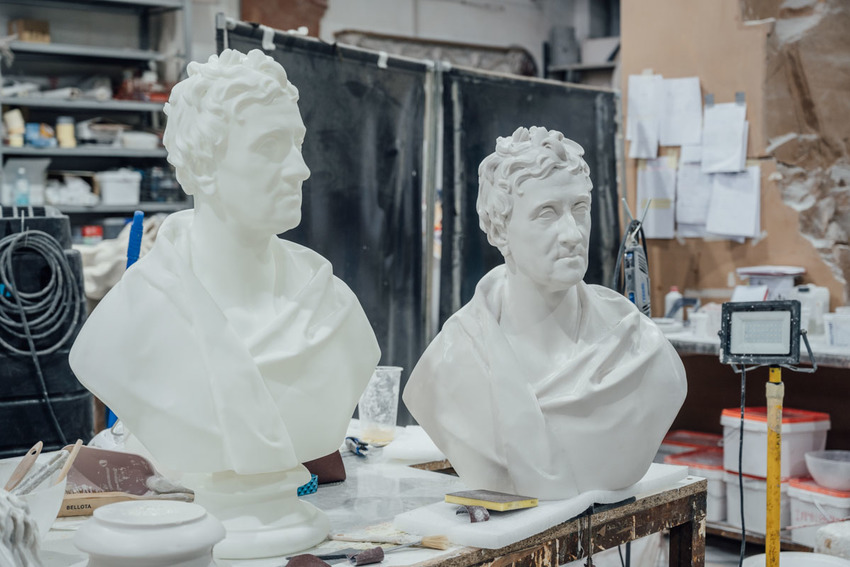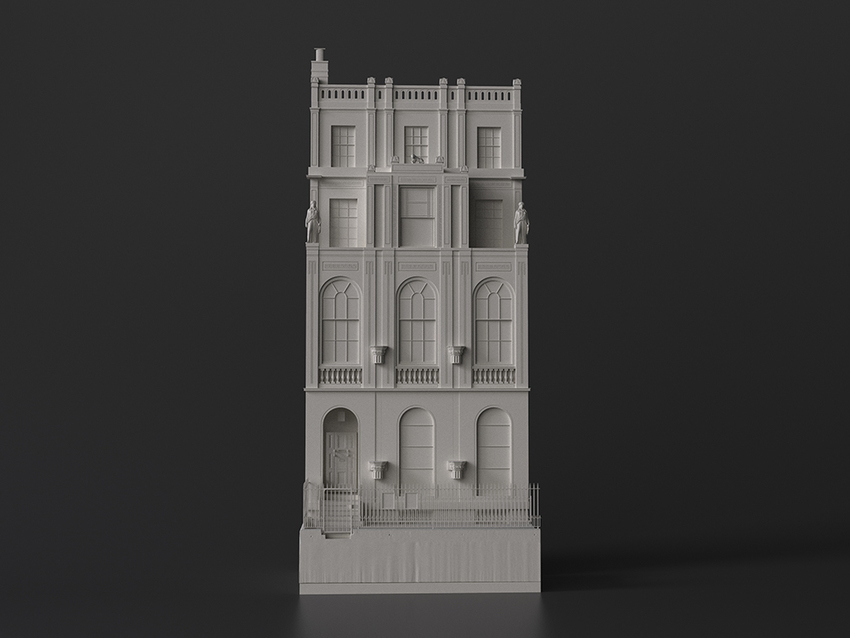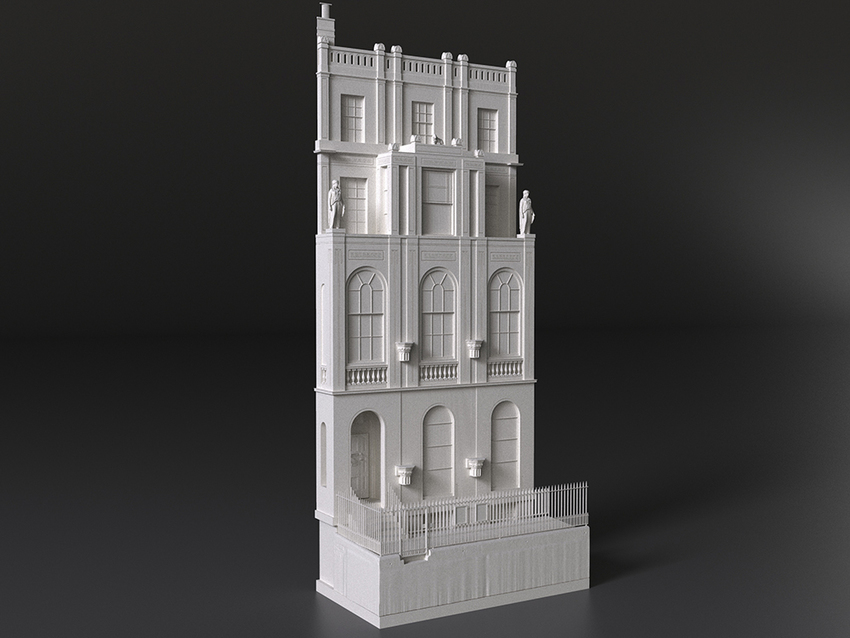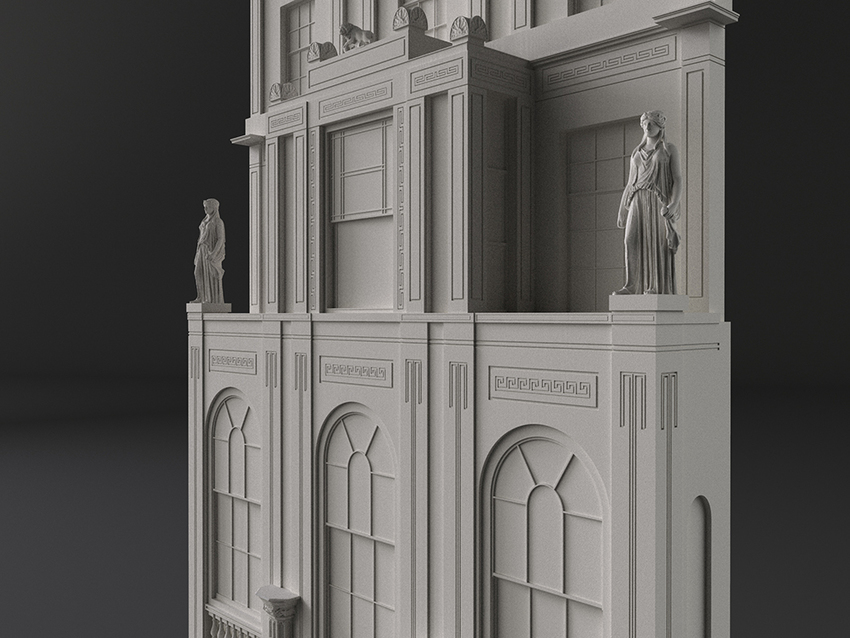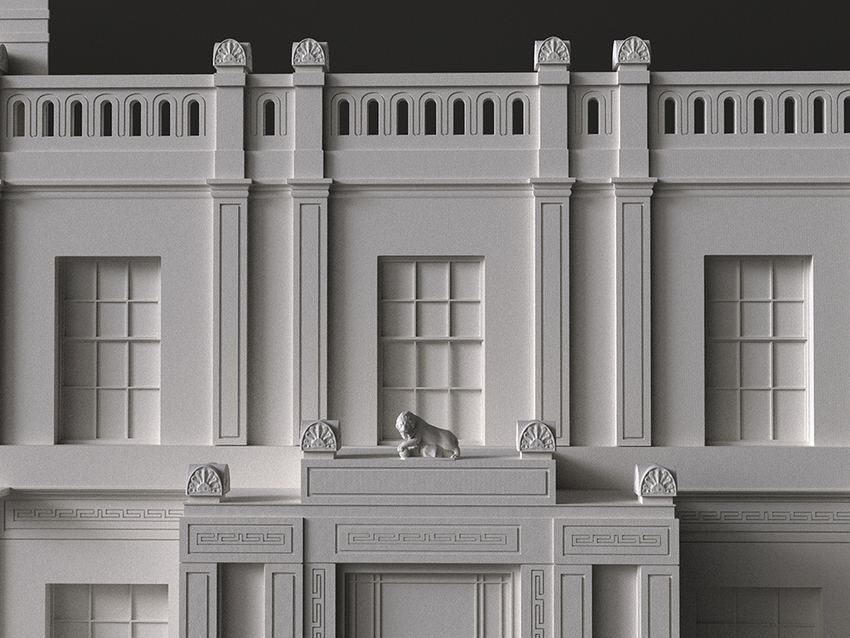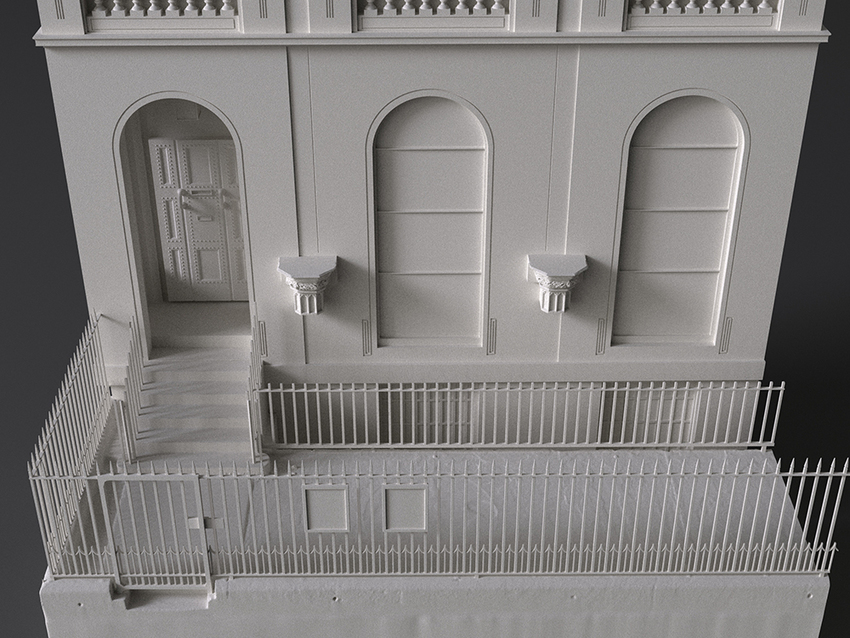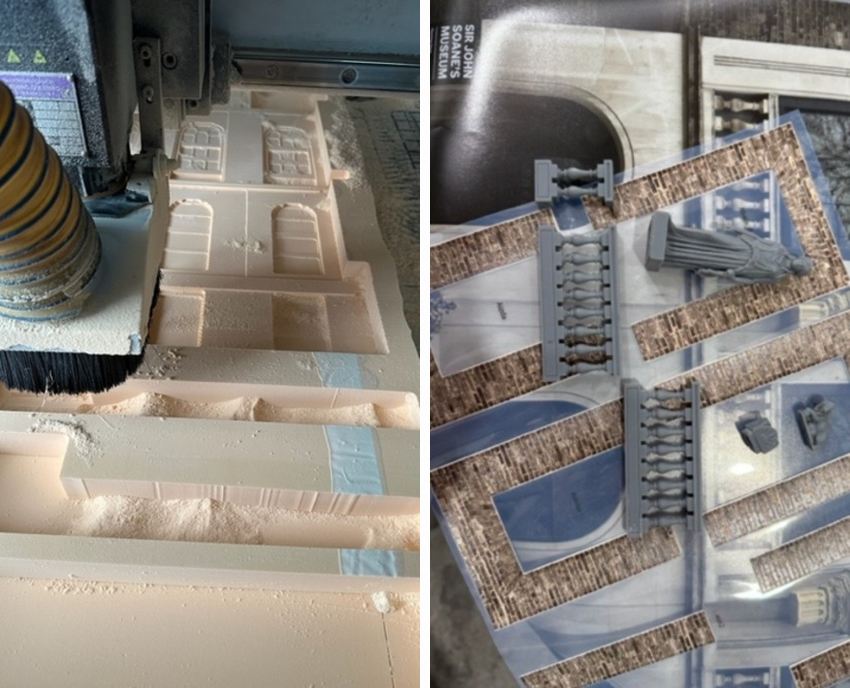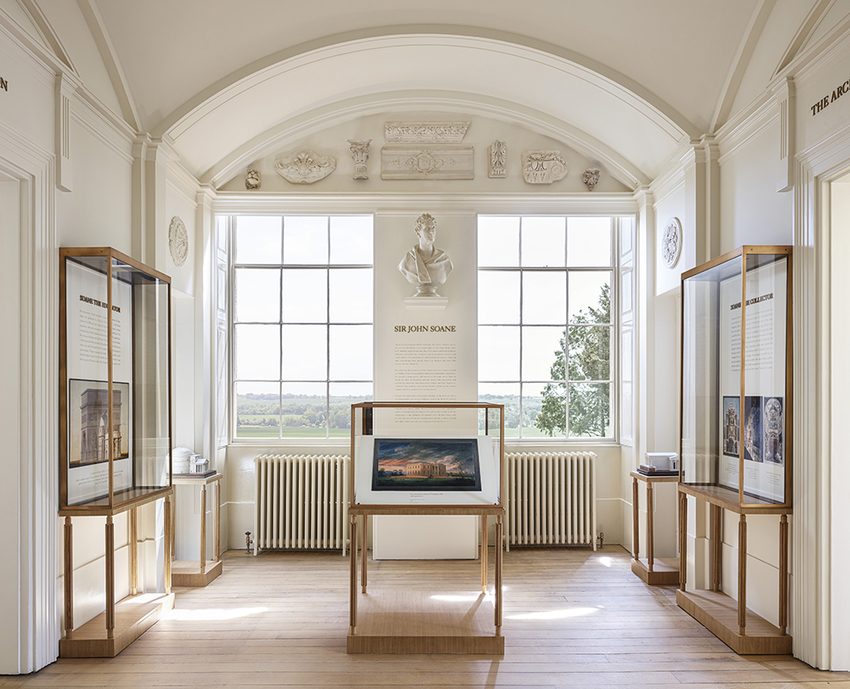
The Sir John Soane Exhibition at RH England © RH England
The facsimiles that were commissioned to be part of the permanent exhibition are:
- A bust of Sir John Soane’s by Sir Francis Chantrey;
- 4 architectural models of ancient buildings and their respective plinths;
The re-materialised pieces are a tribute to the work of Sir John Soane to remodel Aynho in 1798. They were all recorded using a white light scanner and close-range photogrammetry by Pedro Miró in Sir John Soane’s Museum, London in April 2023.
Four architectural models of ancient buildings
These architectural models, made in the 19th century by François Fouquet in plaster of Paris, are part of the collection of twenty purchased by Soane in 1834. The models selected to be recreated as facsimiles were:
- Model of the Parthenon, the largest temple on the Acropolis in Athens, ‘restored’ (17.5 x 18 x 33.7 cm) – MR6
- Model of the Temple of ‘Neptune’ at Paestum, Italy, ‘restored’ (17.5 x 16.6 x 33.8cm) – MR27
- Model of the Pantheon, Rome, ‘restored’ (21.8 x 27cm x 31.7 cm) – MR3
- Model of the Erechtheion on the Acropolis, Athens, ‘restored’ (27 x 31 x 39 cm) – MR24
The high-resolution data acquired during the recording phase produced detailed 3D models of the buildings and their bases, which were processed and refined separately using Rhino 3D and Zbrush. The team at Factum worked on reproducing with great accuracy details such as surface texture and the stylistic features of the different capitals, columns and brickwork – such as the miniature Parthenon frieze or even the cracks in the roof of the original maquette.
Some details, such as the inner courtyard of the Temple of Neptune model, were not captured during the recording phase due to the physical limitations of the scanning systems to access such small spaces. In these cases, the team worked on remodelling its features as closely as possible.
Even the letters on each wooden base were rematerialised exactly. The slightly embossed model names on the front of each base were 2.5D printed using elevated printing, reproducing both colour and subtle surface without needing any later touch-ups.
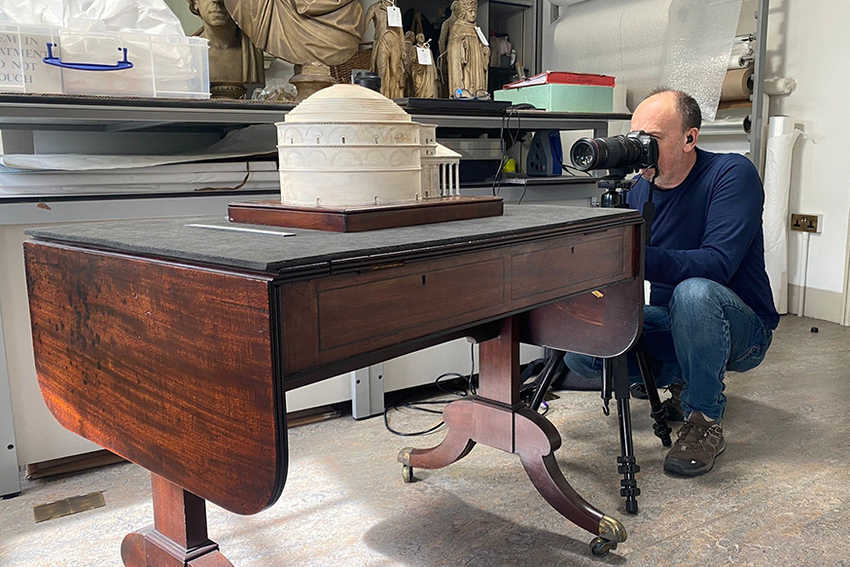
Pedro Miró recording the Pantheon architectural model © Factum Foundation
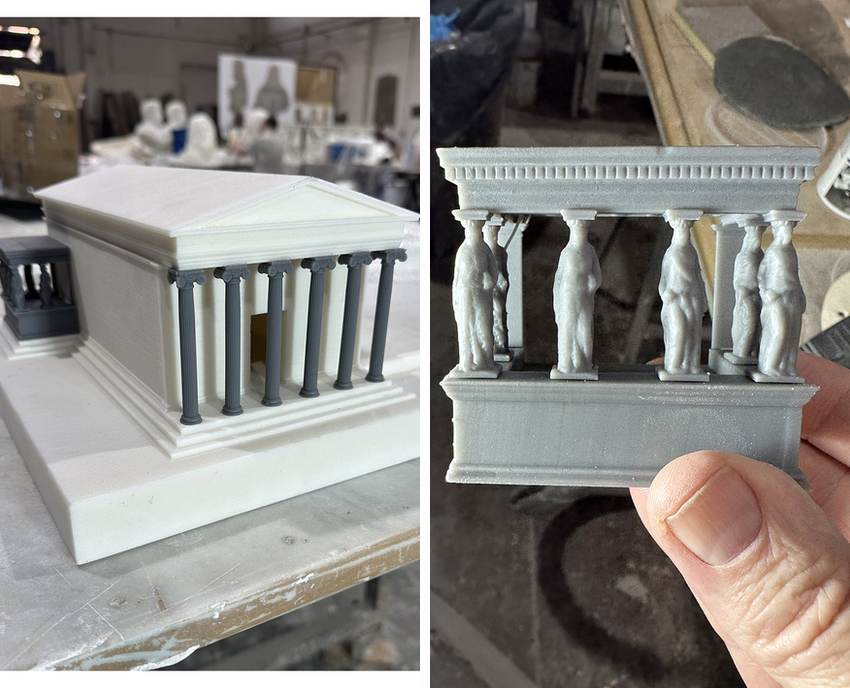
3D printed details © Adam Lowe

Ivan Allende installing the Pantheon model facsimile on the base © Oak Taylor-Smith | Factum Foundation
Carved by Sir Francis Chantrey (1781 – 1841), this marble bust was also recorded in high resolution. After printing the 3D model created from the high-resolution data, the 3D print was retouched and moulded in Factum Foundation’s workshop in order to cast it in synthetic marble and hand-finished to achieve the almost imperceptible veining of the original.
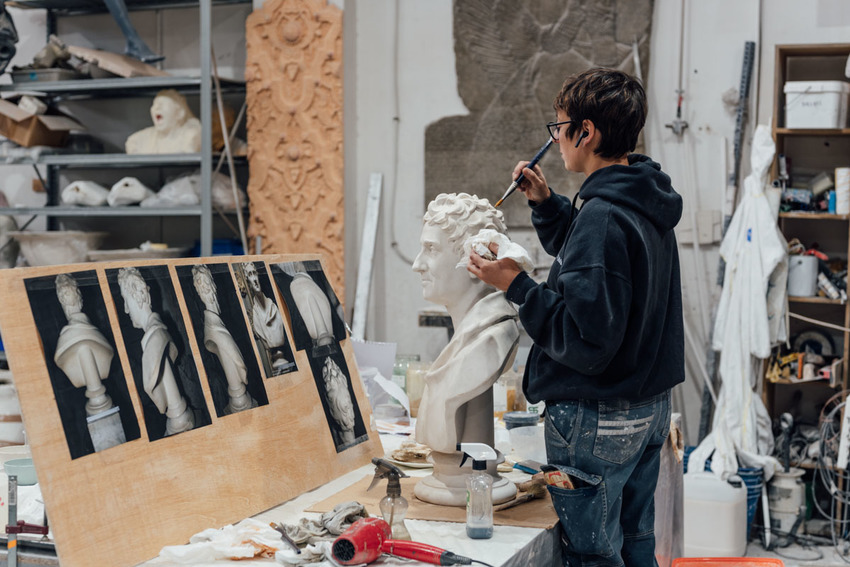
Aniuska Martin working on the facsimile, with colour references © Oak Taylor-Smith | Factum Foundation
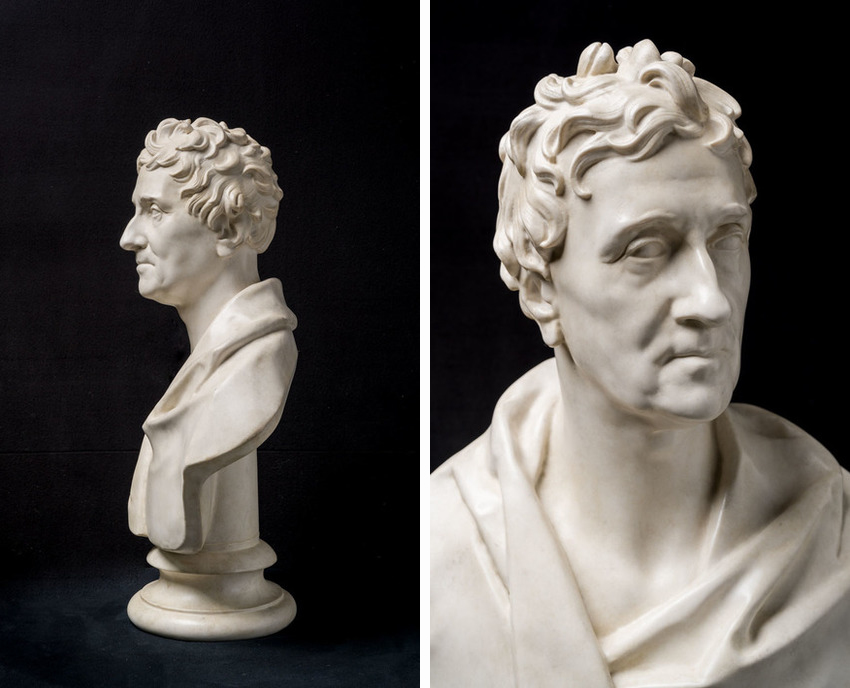
Finished facsimile © Oak Taylor-Smith | Factum Foundation
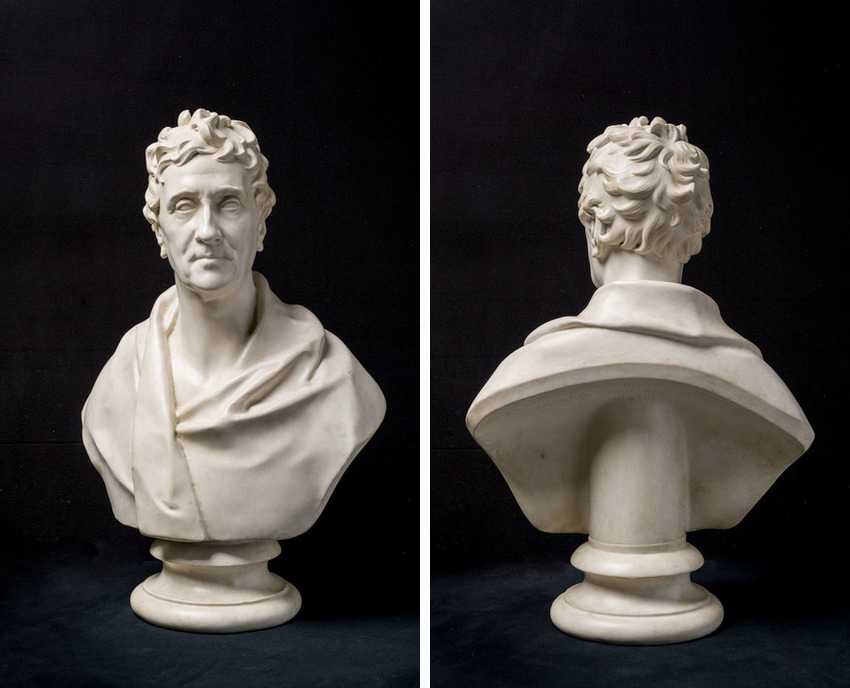
Finished facsimile © Oak Taylor-Smith | Factum Foundation
The façade of the Sir John Soane’s Museum
In addition to the facsimiles, Factum Foundation also produced a physical rematerialisation of the façade of the Sir John Soane’s Museum. Closely working with the museum’s authorities, who provided the recorded data, Factum worked on scaling and achieving an accurate and detailed reproduction in physical form. The façade was CNC-milled in high-density polyurethane before being primed and painted. Some details, such as the brickwork and the sculptural elements, were 3D printed.
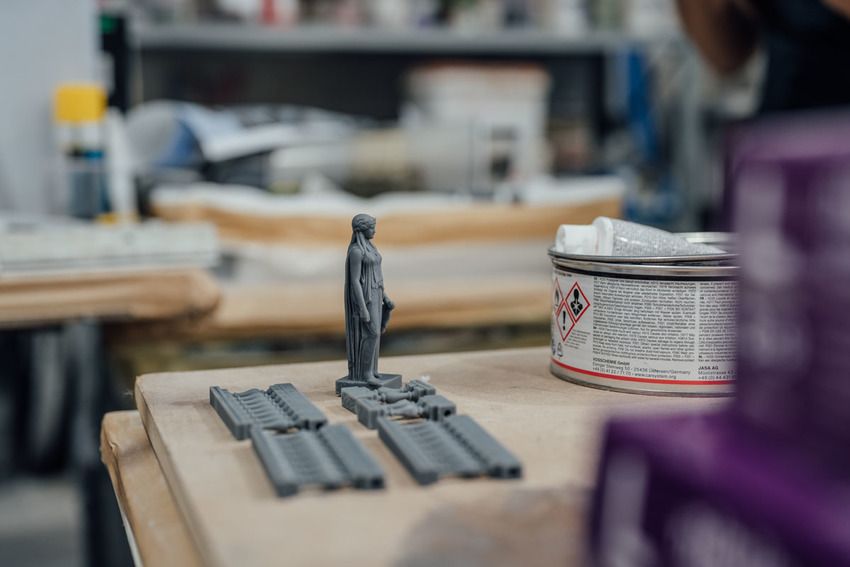
One of the decorative statues and elements of the frieze © Oak Taylor-Smith | Factum Foundation

